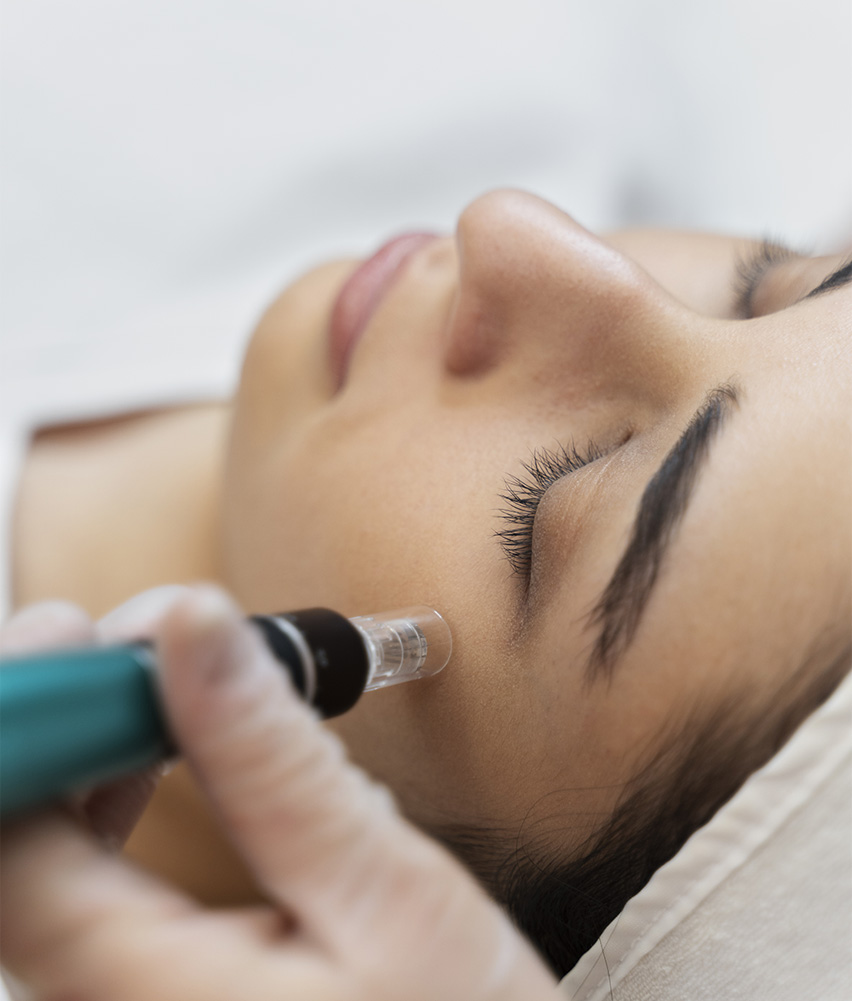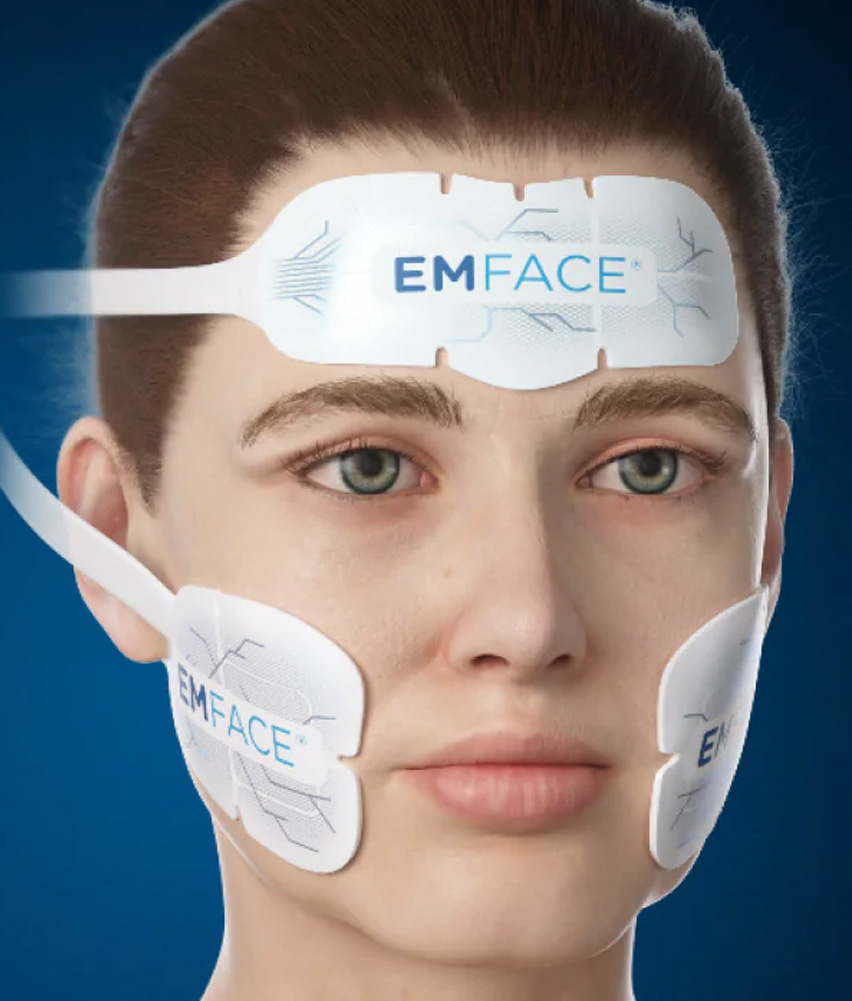
Neck Lift Treatment
As we get older, the skin on our neck, like at other places can lose its elasticity and sag. The causes include aging, sun damage, loss of elasticity over time or excessive weight loss. More often than not, your neck ages before your face and after the eyes, neck region is the second place where we begin to show our age. While we use all sorts of cosmetic procedures on our face, we often neglect our neck area, which gives away our actual age or maybe even make one look older than one actually is.
The classic signs of aging in neck area present as: “cords or bands” - because of the loss of skin elasticity and weakening of the platysma muscle in the middle, which runs vertically through the length of the neck on both sides, it sometimes separates in the middle. The edge of the muscle on each side begins to sag downward leading to two visible bands the extend from just below the chin toward the collarbone leading to the development of a "turkey neck", "turkey wattle” or “turkey gobbler deformity”. Presence of a double chin (because of excess fatty tissue) adds to the problems and loss of a properly defined jawline. With time, neck fullness and sagging tissues can progress to the point where the youthful definition of the jawline is blurred or lost altogether.
A neck lift surgery removes this excess sagging skin (cervicoplasty) under the jawline and on the neck. For those with bands or cords, the neck lift may involve adjusting and tightening the platysma muscle (hence the name platysmaplasty). If needed, the excess fatty tissue in the area is also removed or contoured with liposuction or direct excision.
FAQ's
Q: Who are the ideal candidates for Neck Lift or Platysmaplasty and how is it planned?
A: The best candidates for a neck lift are non-smokers, who otherwise are in a state of good overall health with a positive outlook and have realistic expectations about the outcome. If you are bothered by the signs of an aging neck (excessive loose skin along with turkey neck, turkey wattle or excessive fatty tissue), you may consider a neck-lift.
Q: How is Neck Lift surgery performed?
A: In Simple words, a neck lift surgery involves a combination of procedures, which may involve fixing up the loose skin (Cervicoplasty), fixing the week/aging muscle (Platysmaplasty) and removing the extra fat deposits on the neck (Liposuction/ Lipectomy). While most clients require all these three procedures, some may benefit from only Cervicoplasty (a "skin-only" neck lift), or a combination of Cervicoplasty and Platysmaplasty.
If liposuction/ Lipectomy or platysmaplasty are also planned, then these are most typically performed prior to Cervicoplasty. This is because after the muscle tightening, the lax or redundant skin shows itself up and maximum skin tightening can be achieved.
Cervicoplasty : This involves separation of skin from underlying tissues to loosen it, re-draping it and excision of any excess. The incisions for this are usually hidden behind the ears with a very short extension around the front of the ear lobule.
Platysmaplasty : Through a short incision below the chin (submental incision), skin is separated from the underlying tissue and the platysma muscle is identified below the jawline. The separated muscle is then manipulated; the edges of the two sides of the muscle are quilted together like a corset (midline plication), thus creating a taut new neckline. Sometimes there is a need to excise a small wedge of the muscle below the level of the thyroid cartilage of neck. As the muscle is tightened using platysmaplasty, the excess skin over the neck becomes more prominent which is then lifted and stitched up with a Cervicoplasty.
Liposuction/ Lipectomy : A short incision is made under the chin (same incision as for platysmaplasty) and a narrow suction device is used to remove the excess pre platysmal fat (fat causing double chin), which gives a sculpted look to the neck. In rare cases, a slightly wider incision is required to remove the fat directly, and this is termed an open lipectomy.
Direct Neck Lift : In some cases of skin laxity, muscle banding and fat excess involving a male neck, especially in elderly males, a ‘direct neck lift’ may be performed. Using a zigzag incision under the chin, a W-plasty or Z-plasty is performed. This is done so as to make the scars less noticeable as we tend to notice straight, linear scars more easily. A certain amount of excess skin is also excised directly under the neck. The muscle can also be tightened under direct vision if needed and excess fat is also removed through the open incision. No incision is therefore made in front of or behind the ear.
Q: What other procedures can be combined with a neck lift?
A: Patients with all three components of an aging neck usually undergo a neck lift with or without a combined facelift. In reality, a neck lift is one of the parts of a full facelift, but it can be done as a separate procedure. Other procedures that are commonly combined with it are brow lift, blepharoplasty, anti-wrinkle injection, filler injections, and many other procedures.
Q: What type of anaesthesia is used in the surgery?
A: A neck lift is usually performed under general anesthesia. However, a direct neck lift, which requires incisions on the neck only, can be performed under local anesthesia with sedation.
Q: How much time does the Neck Lift surgery take?
A: It generally requires two to three hours for a complete neck lift surgery. A cervicoplasty alone, without platysmaplasty takes about an hour and a half.
Q: What are the risks or complications from this surgery?
A: As with any type of surgery, there are potential risks with this surgery. Fortunately, most of these are minor and treatable. Most commonly, there can be some swelling and bruising in the lower face and neck area, which usually peaks on the third day and resolves over the next few days. Some people may experience a tightness, tingling or numbness, which usually disappears in a few and should not be cause for much concern. The risk of infection is always there and can be minimized by using a post-operative antibiotic cover and a sterile dressing. To avoid any chance of a Hematoma (blood collection) or a seroma (fluid collection), a small drain is usually inserted at end of surgery. This drain can be removed in a day or two after surgery.
Q: What are the precautions and postoperative care after Neck Lift surgery?
A: After this surgery, the surgeon will advise you to sleep with your head slightly elevated (using an extra pillow on upper back and head). You will also be advised to minimize the rotation of your neck as much as possible. In all likelihood, you will have a surgical drain that is inserted (to drain out any collection of blood and fluid) which is usually removed in a day or two.
Post-operative pain-killers and antibiotics would be needed to be taken as prescribed.
The stitches are removed within four to seven days after the surgery. Most people can return to office work in seven to 14 days. Strenuous activities must however be avoided for 2-3 weeks when complete recovery usually takes.
Q: When can one expect to see the results?
A: The results of a neck lift procedure begin to show almost immediately. The final results, however, may take 4-6 weeks for all the subtle swelling to resolve and healing to complete. In many cases, the neck will continue to improve in appearance for up to six months after your operation.
Q: How long do the effects last ?
A: Since surgery cannot stop further aging, the results of this surgery do not last forever. A neck lift typically lasts 10-15 years. One must, however, continue to avoid skin damage from the sun, alcohol, and smoking since this can counteract the effects of your neck lift. Also, a significant weight gain could cause neck fullness and sagging.
Q: Is there an alternative to neck lift surgery?
A: There is no other surgical alternative to a neck lift surgery. For those who don’t want to undergo surgery just yet, can try Anti-wrinkle injections. Anti-wrinkle injections can relax parts of the platysma that are responsible for the "band" appearance or look of fullness. Those injections can be done in 15 minutes on an outpatient basis, and give immediate results.



